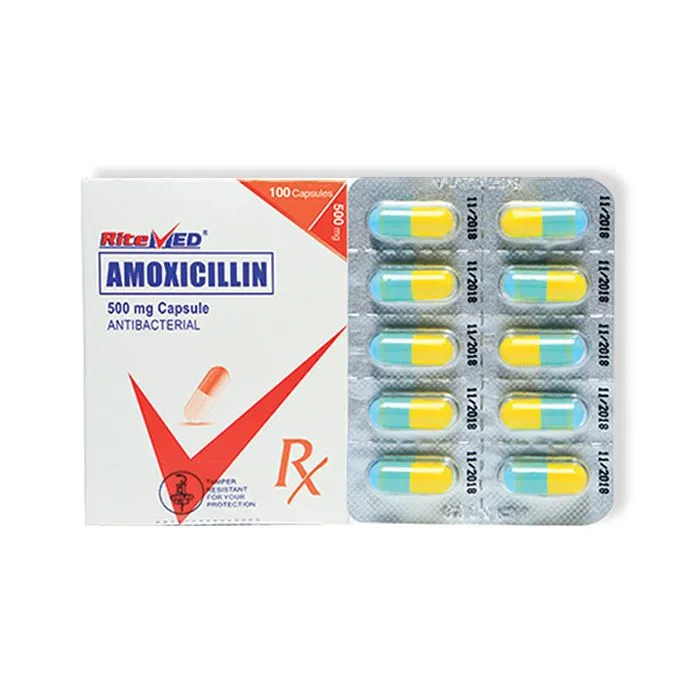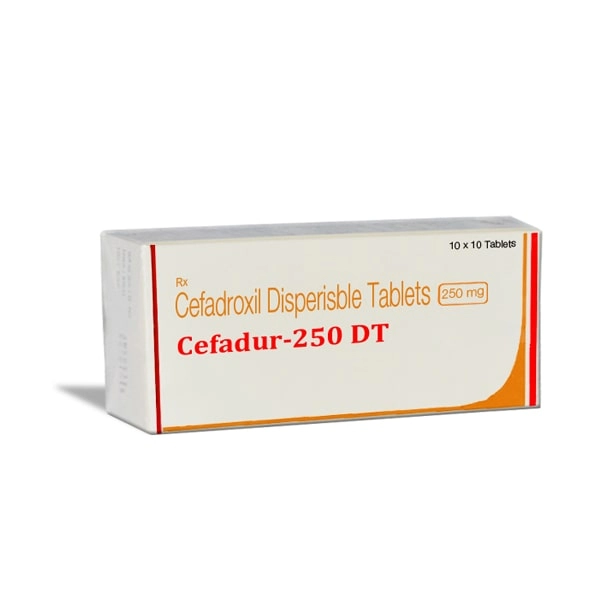Description
Distaclor 500mg
Distaclor 500mg is an effective antibiotic medication primarily used to treat a variety of bacterial infections. It contains Cefaclor, a cephalosporin antibiotic that works by inhibiting the growth of bacteria, stopping their reproduction and spread.
This medication is commonly prescribed for respiratory tract infections, skin infections, ear infections, and urinary tract infections. Distaclor is typically well-tolerated and can help relieve symptoms such as fever, pain, and inflammation associated with bacterial infections. It is essential to complete the full course as prescribed to ensure the infection is entirely eradicated and to prevent resistance.
Uses of Distaclor 500mg:
- Respiratory Tract Infections: Treats conditions like pneumonia, bronchitis, and sinusitis caused by bacterial infections.
- Urinary Tract Infections (UTIs): Helps treat infections in the kidneys, bladder, or urethra.
- Ear Infections: Effective in treating otitis media (middle ear infection).
- Skin Infections: Used for bacterial infections of the skin such as impetigo or cellulitis.
- Throat Infections: Treats pharyngitis and tonsillitis caused by bacteria.
- Soft Tissue Infections: Helps manage infections affecting tissues beneath the skin.
How to Use Distaclor 500mg ?
- Dosage: Take one 500mg tablet as prescribed by your doctor, typically every 12 hours for a set period, usually 7-14 days, depending on the infection.
- With or Without Food: Distaclor can be taken with or without food.
- Swallow Whole: Swallow the tablet with a glass of water; do not crush or chew it.
- Consistency: Take the medication at the same time each day to maintain a consistent level in your body.
- Complete the Course: Always complete the prescribed course, even if you feel better before finishing it, to avoid incomplete treatment and bacterial resistance.
How Distaclor 500mg Works ?
Distaclor contains Cefaclor, a cephalosporin antibiotic that works by targeting the cell wall of bacteria. It inhibits the synthesis of the bacterial cell wall, which is essential for their survival. Without this protective structure, bacteria become unable to maintain their shape and integrity, leading to their destruction. By disrupting the growth and reproduction of bacteria, Distaclor effectively treats infections in various parts of the body, including the respiratory, urinary, and skin infections.
Dosage
- General Dosage: The typical dose for adults is 500mg twice daily (every 12 hours), but it may vary based on the infection and doctor's recommendation.
- For Children: The dosage for children is usually adjusted based on age and weight; follow your doctor’s instructions carefully.
- Duration: Treatment typically lasts 7-14 days, depending on the severity and type of infection.
- Missed Dose: If you miss a dose, take it as soon as you remember unless it’s almost time for your next dose. Do not double the dose to make up for a missed one.
- Adjustments: Your doctor may adjust the dosage for individuals with kidney issues. Always follow the prescribed instructions.
Benefits
- Effective Infection Treatment: Distaclor is highly effective in treating a wide range of bacterial infections, including respiratory, urinary, and skin infections.
- Prevents Infection Spread: By eliminating the bacteria causing the infection, it helps prevent the spread of illness to others.
- Reduces Symptoms: Helps alleviate symptoms like fever, pain, and inflammation associated with bacterial infections.
- Quick Relief: Provides relief from discomfort and accelerates the recovery process when taken as prescribed.
- Broad-Spectrum Action: Effective against various strains of bacteria, making it a versatile option for treating different types of infections.
Side Effects
Common side effects may include nausea, vomiting, diarrhea, or stomach upset. Some individuals may experience headaches, dizziness, or fatigue. Rarely, allergic reactions such as skin rash, itching, or swelling of the face and lips can occur. Long-term use might lead to yeast infections or Clostridium difficile infection. In rare cases, it may cause liver issues like jaundice. If any severe side effects occur, consult your doctor immediately.
Precautions
- Allergies: Inform your doctor if you have a history of allergies to antibiotics, particularly cephalosporins.
- Liver or Kidney Issues: Use with caution if you have liver or kidney problems.
- Pregnancy & Breastfeeding: Consult your doctor before use if you are pregnant or breastfeeding.
- Complete the Course: Always finish the full prescribed course to avoid incomplete treatment and bacterial resistance.
- Drug Interactions: Inform your doctor about any other medications you're taking to prevent interactions.
Frequently Asked Questions
What is Distaclor 500mg used for?
Distaclor 500mg is an antibiotic used to treat various bacterial infections, such as respiratory, urinary, skin, and ear infections.
How should I take Distaclor 500mg?
Take one 500mg tablet twice a day as prescribed by your doctor. You can take it with or without food, and always swallow it whole with water.
What if I miss a dose?
If you miss a dose, take it as soon as you remember, unless it's almost time for your next dose. Do not double the dose to make up for a missed one.
Are there any side effects?
Common side effects include nausea, vomiting, diarrhea, and headaches. Rarely, allergic reactions, liver issues, or infections may occur.
Can I stop taking Distaclor once I feel better?
No, always complete the full prescribed course, even if you feel better, to ensure the infection is fully treated and to prevent resistance.
Can I take Distaclor if I’m pregnant or breastfeeding?
Consult your doctor before taking Distaclor if you are pregnant or breastfeeding to ensure it is safe for you.
Are there any drug interactions with Distaclor?
Always inform your doctor about any other medications you are taking to avoid potential drug
Conclusion:
Distaclor 500mg is an effective antibiotic for treating various bacterial infections, including respiratory, urinary, and skin infections. By completing the full prescribed course, it helps eliminate bacteria and prevents the infection from returning. While side effects are rare, it's essential to follow your doctor’s guidance, especially if you have any underlying health conditions. Distaclor offers a reliable treatment option for bacterial infections when used appropriately.







.webp)


